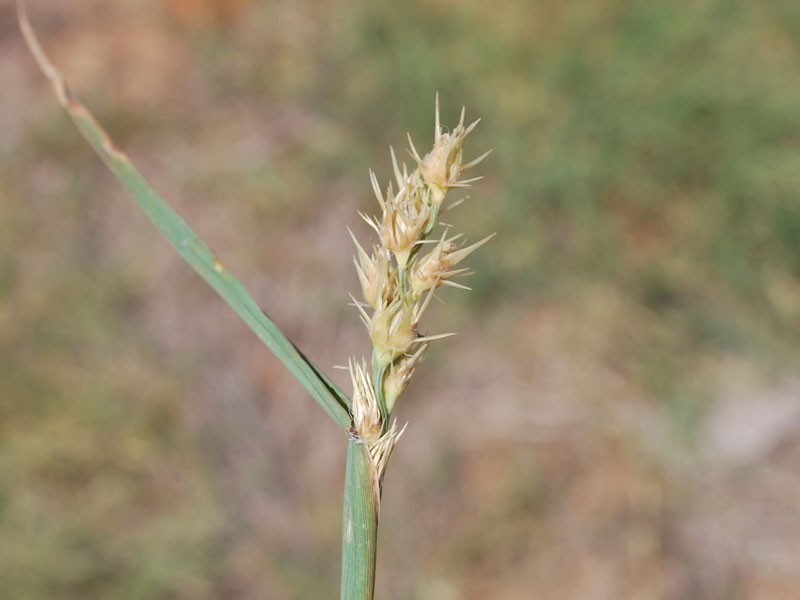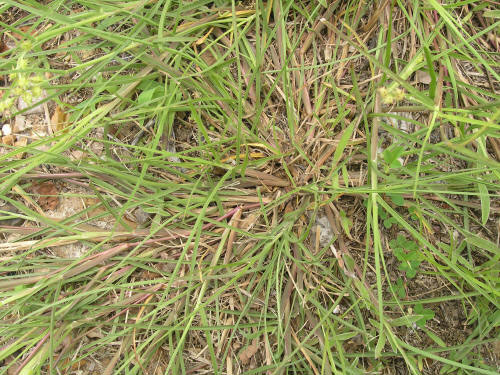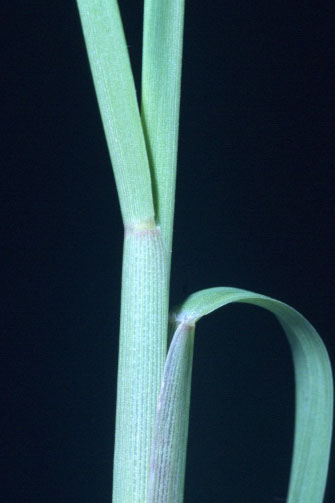Field sandbur
Common Name: Field Sandbur
Other Names: Longspine Sandbur, Mat Sandbur, Grassbur, Burgrass
Species Name: Cenchrus spinifex (Hack.) Fern
Plant Type: Grasses & Grass-like
Family Name: Poaceae
Examples of Field SandburCenchrus spinifex (Hack.) Fern
| Plant Facts | |
|---|---|
| Origin | Native |
| Duration | Annual (rarely, a short-lived perennial) |
| Season | Warm |
| Distribution in the U.S. | Central and southern Great Plains, not abundant in the north |
| Distribution in Oklahoma | Throughout the state, more prominent further west |
ID Characteristics
- Field Identification Characteristics
- Immature plants, often purplish, have flattened stems usually spreading horizontally
- The spikes or heads are 1-3 inches long with 10-30 burs containing in each cluster
- Inflorescence may be partially enclosed in the upper leaf
- Leaf and Stem Characteristics
- Sheath: Loose, smooth, flattened, slightly hairy on the margins
- Blade: Flat, sometimes folded, tapering to a point, may be rough to the touch
- Ligule: Membranous, fringed with hairs
- Culm: Flattened, may be upright or growing flat on the ground
- Floral Characteristics
- Inflorescence: Spike of 6-20 spiny, hairy burs; terminal, spikes sometimes partially enclosed in upper leaf
- Spikelet: Spikelets surrounded by bur; bur is round or oval, densely hairy, covered with 45-65 upward pointing spines
- Florets: 2, 1 sterile and 1 fertile; sterile floret is smaller than the fertile floret
- Lemmas: Narrow, pointed, smooth
- Awns: None; numerous spines
- Glumes: Unequal; first glume less than 1/3 length of spikelet, narrow, pointed; second glume longer, wider, pointed
| Habitat/Ecology | |
|---|---|
| Soil Type | It grows particularly well in sandy soils, as its name implies, but also occurs in heavier soils |
| Habitat | Around farmsteads, roads, waste places, cultivated fields, lawns and rangeland in poor conditions |
| Successional Stage | Mid |
Topics:



